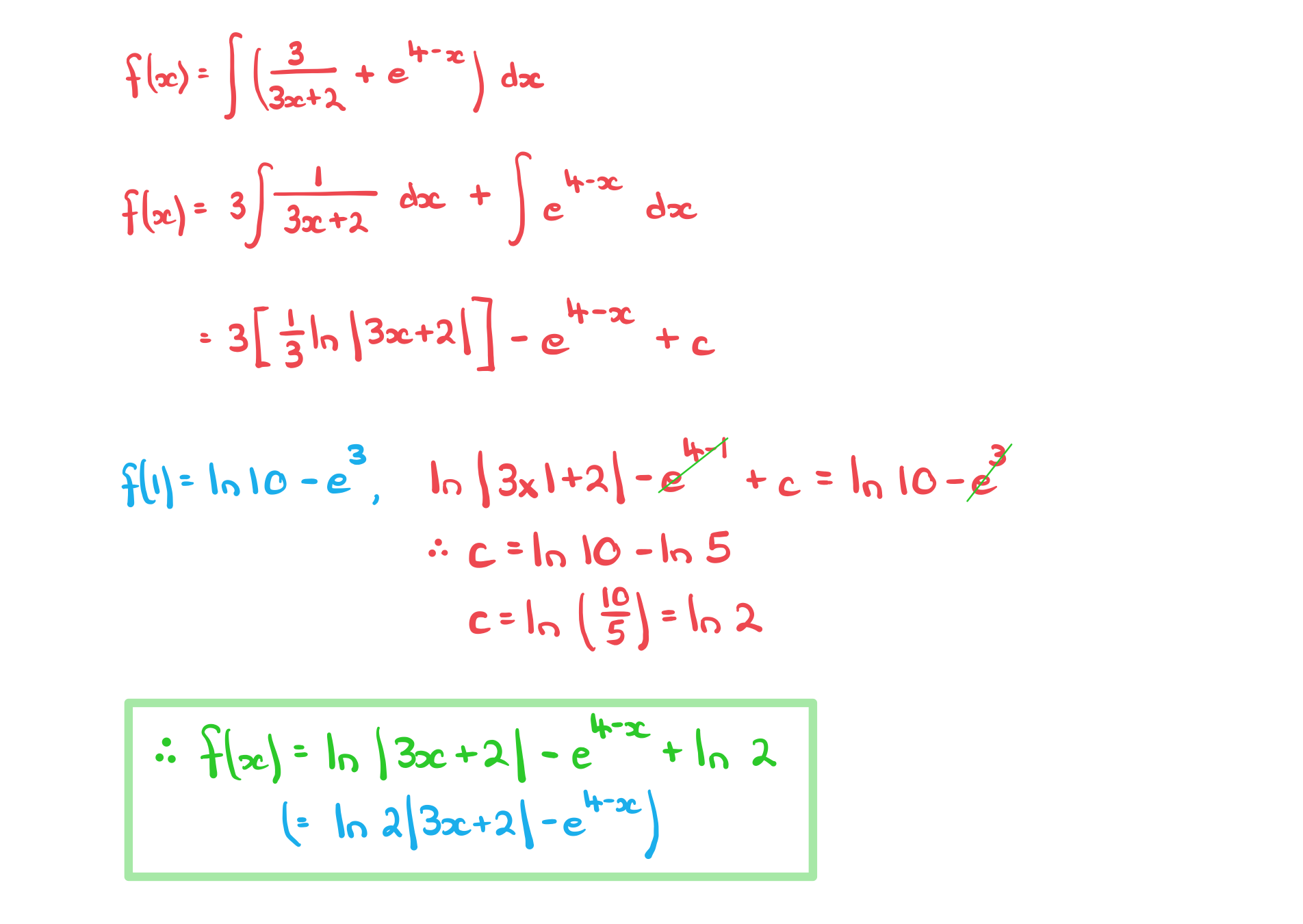Integrating Special Functions (DP IB Analysis & Approaches (AA)): Revision Note
Did this video help you?
Integrating Trig Functions
How do I integrate sin and cos?
The antiderivatives for sine and cosine are
where is the constant of integration
Examiner Tips and Tricks
Both of the standard integrals above are in the exam formula booklet.
For the linear function
, where
and
are constants,
For calculus with trigonometric functions angles must be measured in radians
Ensure you know how to change the angle mode on your GDC
Examiner Tips and Tricks
Make sure you have a copy of the formula booklet during revision but don't try to memorise everything in the formula booklet.
Instead, make sure you are familiar with the layout of the formula booklet. That way you’ll be able to quickly locate whatever you are after.
For formulae you think you have remembered, use the booklet to double check.
Worked Example
a) Find, in the form, an expression for each integral
i)
ii)
iii)

b) The graph of for question (a) part (ii) passes through the point with coordinates
.
Find the value of.

Did this video help you?
Integrating e^x & 1/x
How do I integrate exponentials and 1/x?
The antiderivatives involving
and
are
where is the constant of integration
Examiner Tips and Tricks
Both of the standard integrals above are in the exam formula booklet.
For the linear function
, where
and
are constants,
It follows from the last result (by using the using the reverse chain rule) that
Examiner Tips and Tricks
With ln, it can sometimes be useful to write the constant of integration,, as a logarithm. I.e., by letting
for some (positive) constant
.
Using the laws of logarithms, the answer can then be written as a single term. For example:
Worked Example
A curve has the gradient function.
Given the exact value of is
find an expression for
.


Unlock more, it's free!
Did this page help you?